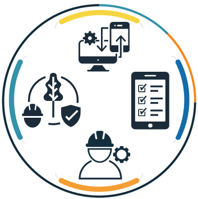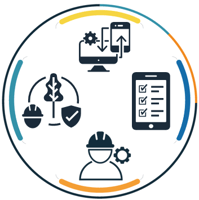All operational business processes follow the same basic pattern:
- Collect some type of data
- Layer business rules on it (for example, make the priority high when the initiator is a board member)
- Route it down a workflow, preferably with automated assignments so people don’t need to know how to direct the request
- Report on it
Beyond that, you can get as fancy as you want – roles and authority levels to protect data on a need-to-know basis, mobile access, proactive notifications, audit trails, dashboards, etc. But at a fundamental level, the mechanics of operational business processes are simple: collect some data, route it, report on it.
With that basic understanding, you begin to work out how the boring-but-important elements of applications – crash recovery, memory management, communication with datasources, security, and much more – that have nothing to do with the business can be detached from the much more important, yet much simpler, task of encapsulating business-specific rules and flows.
Taking it a step further, all the difficult, non-business-specific code can be combined into a collection of engines whose job it is to execute business functionality, which can now be encapsulated and stored as metadata. Put it all together, and you end up with a no-code platform on top of which the applications it executes live as files that can easily be moved from one area to another.
This is an increasingly popular and efficient way of creating and maintaining business applications, and it represents the future.
Just as importantly, no-code platforms don’t require professional programmers to build agile, high-quality enterprise applications. Our own experience proves this – when we recruit Application Engineers, we look for smart recent graduates, preferably with engineering or science degrees, but we don’t require programming skills.
Throw in a good governance model (just because you can make a change quickly doesn’t mean you should – at least not without good testing and communication) and you’ve got a recipe for cost-effective, scalable digitization.
Different vendors have created platforms with engines tuned to specific application spaces. Force.com excels at customer management solutions, as its CRM background would suggest. Zoho addresses common back-office needs of small and medium businesses. Ours is focused on operational processes, in which field work, continuous improvement, and regulatory compliance are common elements.
Regardless of the markets they address, however, all these platforms yield similar benefits:
- It’s easier, faster, and safer to make changes specific to your business
- More tailored functionality means lower change management and training costs
- Ongoing maintenance is significantly less expensive
- A constantly upgraded underlying platform gives you access to new features without having to go through an expensive refactoring process, as IBM, SAP, and other traditional ERPs force you to do
No-code and low-code platforms will continue to grow as a crucial element of any enterprise’s technology ecosystem. The economics of the hard savings they yield are unassailable, as are the soft savings from increased agility, lower risk, and improved competitiveness. To argue otherwise is to be on the losing side of progress.






